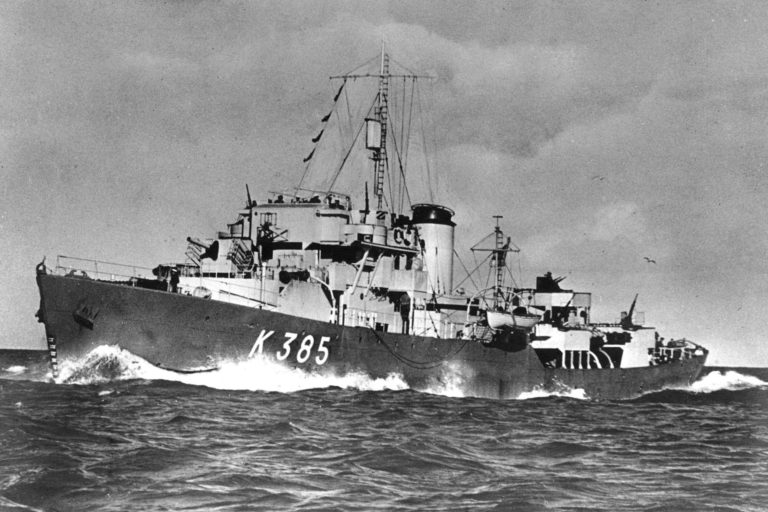Waikato was launched by Her Royal Highness the Princess Alexandra on 18 February 1965. Waikato’s weapon systems were at the forefront of technology in the mid 1960s. The fire control system for the guns was so new that the Royal Navy conducted its ‘first of class’ trials in Waikato, because their first ship to be fitted with the system was not yet operational.
Ship details:
Dimensions: 113 x 12.5 x 5.5m
Displacement: 2990 tonnes
Pennant No.: F55
Builder: Harland & Wolff, Belfast
Laid Down: 10 January 1964
Launched: 18 February 1965
Commissioned: 19 September 1966
Decommissioned: 3 July 1998
Machinery: 2 shaft, geared steam turbine shp 30,000 = 30 knots
Complement: 245 Officers and ratings
Armament:
2 x 4.5-inch (115mm) guns in a single two gun turret
2 x 20mm Oerlikons single mounts
1 x quad mount Seacat missile system launcher
6 x ASW torpedo tubes 324mm added 1977
1 x Limbo 3-barrelled ASW Mortar (removed 1977)
Aircraft: 1 x Westland WASP helicopter
Ship History:
In the early 1960s the RNZN was grappling with the problem of replacing its aging Loch class frigates. Two new vessels had been acquired, but this still left four others to be replaced, the essence of the problem being the economic situation of the country and the escalating cost of new ships.
HMNZ Ships Otago and Taranaki had been ordered in the late 1950s and had been commissioned in 1960 and 1961 respectively. These were new generation ships, of the Rothesay class but modified for the RNZN, to the extent that they became designated as the Otago class. Cabinet approval was finally given for the purchase of a third ship in 1963, and the Chief of Naval Staff Rear Admiral Peter Phipps DSC went to the United Kingdom to arrange its construction. This was to have been another modified Rothesay type, but in Britain it was apparent that these had been superseded and an order was placed for one of the new Leander class instead. The order for Waikato was placed in June 1963.
The Leanders were based on the Whitby class design, as were the Rothesays, but much of the electronic equipment was more modern. Their hull was slightly narrower than Canterbury and Wellington. This modern touch was reflected in Waikato by the inclusion of such things as Formica paneling in the dining spaces and televisions in the mess decks, the televisions being donated by the people of the Waikato.
Built by Harland and Wolff at Belfast, Waikato was launched by Her Royal Highness the Princess Alexandra with a bottle of wine from the Te Kauwhata vineyards on 18 February 1965. The ship was commissioned into the RNZN at Belfast on 19 September and proceeded to Portsmouth for an extensive three month period of trials. To help celebrate the commissioning, Waikato Breweries donated 40 dozen bottles of beer to the ship’s company.
Waikato’s weapon systems were at the forefront of technology in the mid 1960s. The fire control system for the guns was so new that the Royal Navy conducted its ‘first of class’ trials in Waikato, because their first ship to be fitted with the system was not yet operational. Similarly, the control system for the Seacat missile was more modern than that being fitted in Otago and Taranaki at the same time. Waikato was also equipped with a Wasp helicopter, the first RNZN ship to have an aircraft since 1942. The Wasp was primarily for launching anti-submarine torpedoes, but also filled other roles such as reconnaissance and airlifting stores and personnel. Having a helicopter also resulted in men of the Royal New Zealand Air Force being part of the ship’s complement, to maintain the aircraft. While considered a new concept at the time, this arrangement had been in place on board the Leander class cruisers of the 1930s and early 1940s.
With trials completed Waikato undertook a work-up at Portland, before sailing for New Zealand in April 1967 via the Panama Canal and Pearl Harbor. Waikato berthed at its adopted port of Tauranga, the closest to the Waikato, in June. The next three years saw the ship engaged in the usual rounds of exercises and port visits, with its first deployment to the Commonwealth Strategic Reserve in Singapore taking place between October 1967 and May 1968. A second deployment to the Far East commenced in October 1969 and ended with the ship making a rendezvous with the Royal Yacht Britannia at Suva, on 1 March 1970.
1970 was not a good year for Waikato. Royal Yacht escort duties occupied most of March but were tragically marred on Sunday 15th when the ship was following Britannia out of Wellington into a southerly gale. While the forecastle was being secured for sea, a wave washed three men over the side. One was briefly able to grab hold of a guardrail, but all three ended up in the water. The helicopter was immediately launched but only two of the men were alive when recovered. Chief Shipwright David Lindsay sadly lost his life, his body was recovered by the helicopter crew.
On 5 October, the ship was at sea off the North Island, participating in Exercise LONGEX 70. A small hole developed in a hydraulic hose of a stabiliser, which resulted in a major fire in the engine room. It took some time to extinguish the fire and there were serious concerns about the safety of the ship. The fire was brought under control, although the ship was unable to steam and had to be towed into harbour by HMS Minerva. HMS Minerva was later presented with a mirror by Waikato, a promotional item from the Waikato brewing company which had the firm’s catch phrase Wherever you go, Take Waikato etched on it.
Repairs following the fire took nearly a year, after which Waikato again slipped into the peace-time routine of exercises, port visits and deployments to the Far East. During 1977 the ship underwent a major refit and amongst other work, the flight deck and hangar were significantly modified. The anti-submarine mortar was removed, allowing the flight deck to be lengthened, while the hangar was increased in size.
The normal deployment cycle to the Far East was varied in 1978, when the ship was attached to the Canadian Second Destroyer Squadron for a deployment to Canada, and the western seaboard of the United States. The attachment began on departing New Zealand where the Canadians had been part of exercise LONGEX and the deployment started by visiting Australia for an exercise. From there the squadron proceeded to Pearl Harbor with an Australian Task Group, as part of Exercise RIMPAC 78. The USS Enterprise carrier Task Group started the exercise from San Diego.
On 10 April, while engaged in RIMPAC a United States Navy Sea King helicopter operating off the Canadian tanker HMCS Provider made a ‘mayday’ call because of a low fuel state. Despite being tasked with remaining with the main body, Waikato proceeded at best speed in the direction of the distressed helicopter. Contact with the aircraft was made and the pilot was informed that Waikato was prepared to accept it onboard if he so wished. The pilot opted to attempt to land-on, despite the less than calm sea conditions and the relatively small flight deck for the big helicopter. His only other option was to ditch in the sea, which would almost certainly have led to lost of life. In a skilful piece of flying the helicopter landed on board with less than 30 seconds fuel remaining.[1]
After the ship’s return to New Zealand later in the year, it embarked on a New Zealand cruise. On 15 November the ship had left Wellington to visit the Bounty Islands, to the southeast of the South Island, in heavy weather. During the late morning a Russian fishing vessel well to the south of New Zealand, called for assistance for a critically injured seaman. Waikato altered her course and increased speed to get within flying range. Several unsuccessful attempts in appalling weather conditions were made to locate the fishing vessel. The vessel was finally located 60 miles from its reported position the following afternoon, and with considerable difficulty the sailor was winched off the ship and taken on board. He was flown to hospital at 3.30 am the next morning. Chief Medical Assistant Bill Filmer, who was winched on board the fishing vessel, received the British Empire Medal for gallantry for his actions.
When the Falklands War broke out in 1982, Prime Minister Robert Muldoon offered to send a ship to the Indian Ocean to relieve a Royal Navy ship, so it could be used in the war. Waikato was the second RNZN frigate to deploy to the Indian Ocean after Canterbury for what was known as Armilla Patrol. The Armilla Patrol was a naval force available to assist any British flagged merchant ships that may have been attacked by either Iran or Iraq, who were then at war with each other. Port visits were few, and in November 1982, the ship’s company was looking forward to a few days in the Seychelles. Lieutenant Commander Ken Mutch, the ship’s supply officer, had been sent ahead as the liaison officer. This coincided with an attempted coup on the island, and Lieutenant Commander Mutch gained some international publicity by organising an international hotel full of guests, when the staff did not turn up for work because of the coup. The ship completed two deployments to the area.
A memorable event in peace making was the ship’s participation in the peace talks between Bougainville dissidents and the Papua New Guinea Government. The frigates Wellington and Waikato provided transport and accommodation for the two PNG and Bougainville delegations, whilst Endeavour provided a neutral venue for the negotiations.
Besides purely operational tasks, Waikato also participated in many ceremonial occasions during her 35 years service. Amongst these were representing the Royal New Zealand Navy at the Australian bicentennial celebrations, the Royal Malaysian Navy 55th Anniversary Fleet Review, the Royal Fiji Military Forces (Naval Squadron) 10th and 20th Anniversaries and the end of the Second World War in the Pacific anniversary. This latter celebration was at Pearl Harbor in 1995, the first time a New Zealand ship had been able to visit there since 1984.
The ship also provided support to other government departments in a multitude of ways during its service. This ranged from support to New Zealand’s sub Antarctic Islands to the provision of civil aid to the country’s furthermost territories, the Tokelau Islands near the equator, and such events as Expo 88 in Brisbane and Expo 89 in Fukuoka.
One of the more distinctive aspects of serving in Waikato was the privilege of wearing a ship’s beanie. These woolly hats, knitted in the provincial colours of red, yellow and black were first made by the wife of an old sailor in Cambridge. ‘Mum’ Milne was blind and her husband, ‘Hori’, who had served in the Navy during the 1920s and 30s was ‘rugby mad’. When it was announced that the new frigate was to be named Waikato, he suggested she knit the hats for the ship. For the first batch the local Lions club provided the wool, but it was subsequently paid for by the ship’s welfare fund. By the time that she was no longer able to knit, Mum Milne had made over 2,000 beanies. Not content however, Hori convinced a friend, Mrs Betty Wilsher to continue the task. She eventually consented, knitting over 1,000 before she ‘retired’ in 1983.
Always a happy ship, Waikato returned to Auckland from her last period of sea time on Thursday 27 March 1997 and on 1 April the ship went to 60 days’ notice for operations. It then remained alongside at the Devonport Naval Base as a stationary training and accommodation ship, being formally decommissioned on 3 July 1998. The hulk was then sold to a private individual, for the purpose of sinking it as an artificial reef. On Saturday 11 November 2000, Waikato was sunk off the Northland coast, near Tutukaka.
The Ship’s Badge
There having been no earlier ship commissioned with the name Waikato,[2] the precedence used in the case of Otago and Taranaki in holding a competition to design a badge for the new Leander-class Frigate, was followed. This was announced in mid 1964, with all secondary schools in the Waikato and Tauranga areas being invited to submit entries. Although not actually in the Waikato Province, Tauranga is the closest port and had been nominated as the ship’s home port.
Over 400 designs were received amongst which was that of William Foster from Tauranga Boys’ College, which was deemed to be the most suitable by the Naval Board. In recognition of this the school received £15 worth of books and Foster a suitably inscribed plaque bearing the naval crown. Later he also received a replica of the ships badge and spent two days at sea on board over the period 6-7 June 1967, when the ship was on passage from Tauranga to Auckland.
Having been approved by the Naval Board in November 1964, the design was sent to the College of Heralds for final drawing and registration. Some difficulty was encountered, however, in conveying the concept of a mythical Maori water monster to the learned gentlemen of that institution, which resulted in several re-drawings and much delay, before the final representation of the badge was agreed. The final drawing was accepted by the Senior Naval Liaison Officer, London, and Captain S. Mercer, RNZN, the ship’s Commanding Officer designate, on 28 March 1966.
Waikato:
Fast running water.
The name of a province in the upper half of the North Island derived from the country’s longest river which runs through the province. The river in turn takes its name from the Māori tribe which inhabited the area.
[1] The Commanding Officer Ian Bradley was cautioned by Naval Staff for his actions in putting the ship at risk from a serious accident.
[2] During the Second World War a minesweeper was to be built with this name but was cancelled. To date the RNZN has not reused the name.

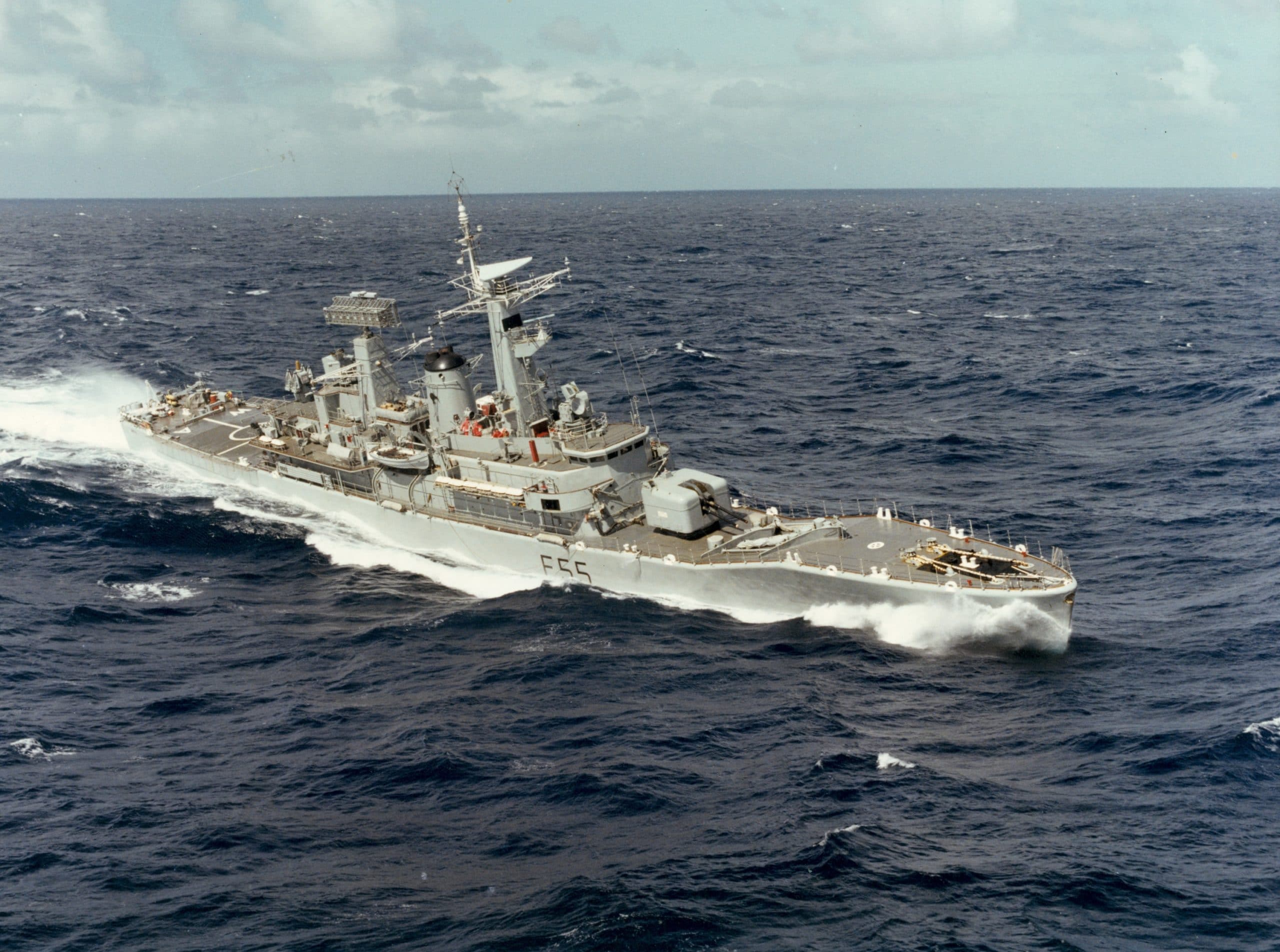


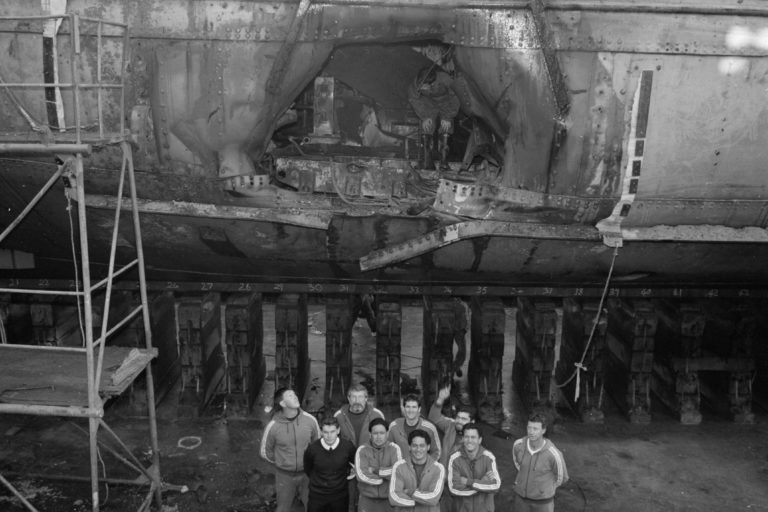
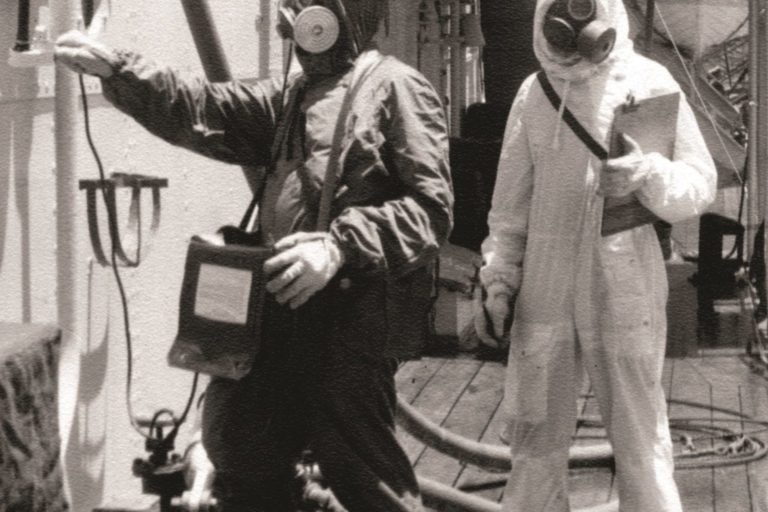
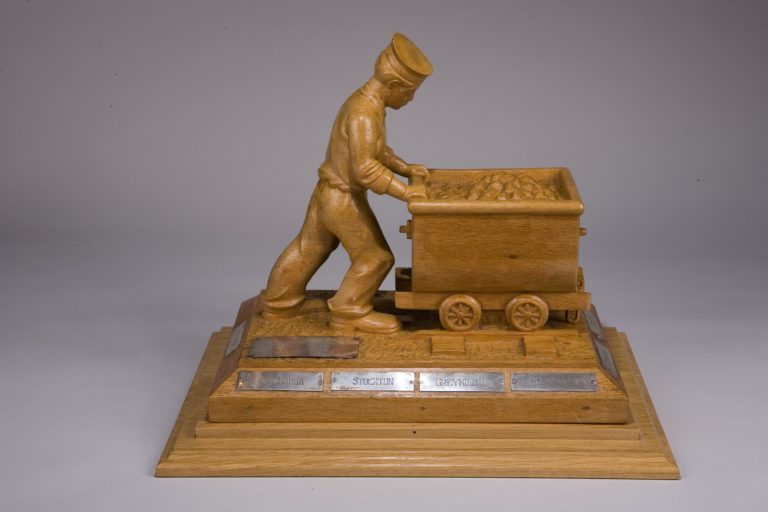
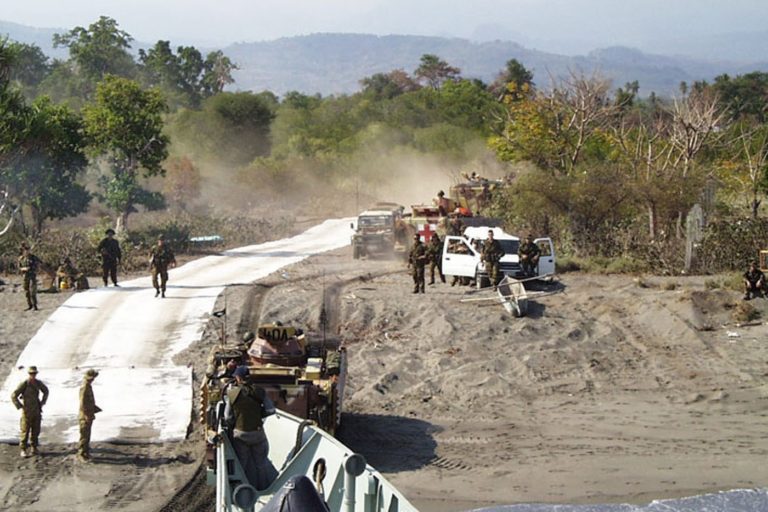
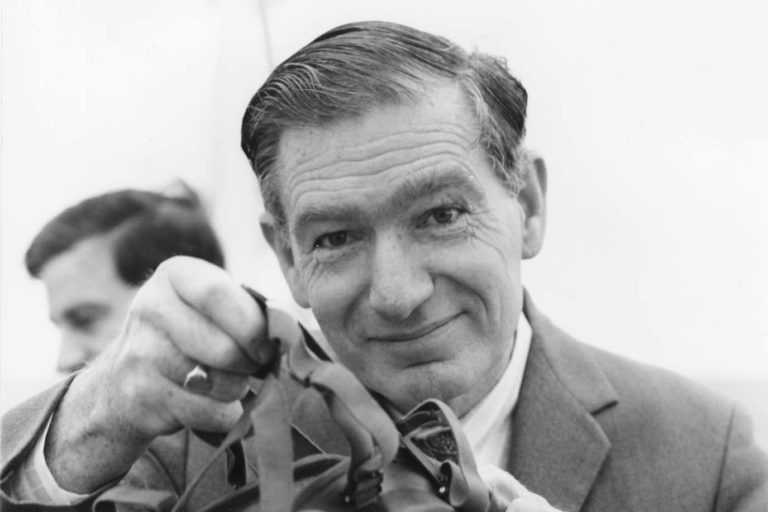
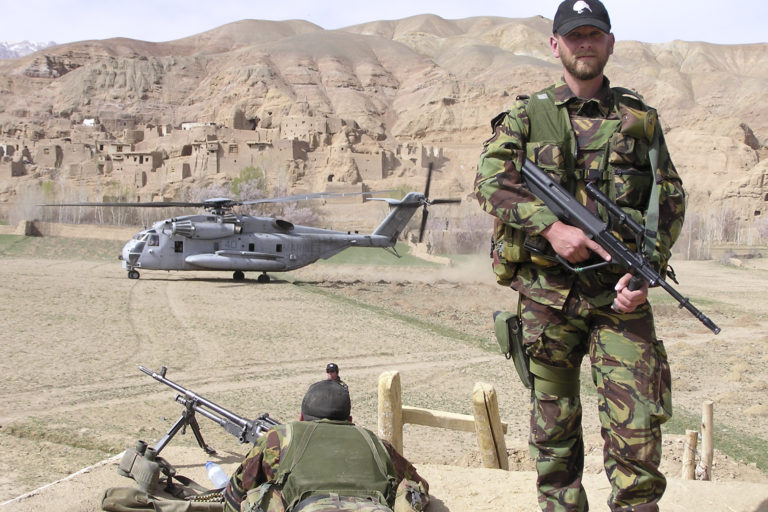
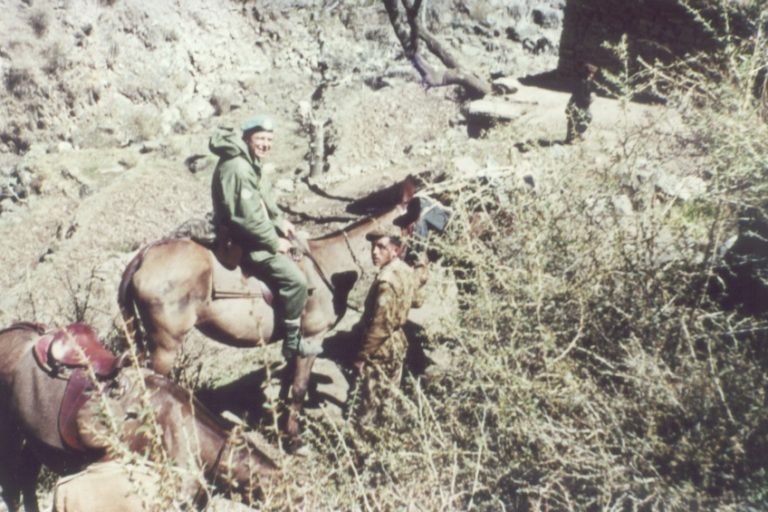
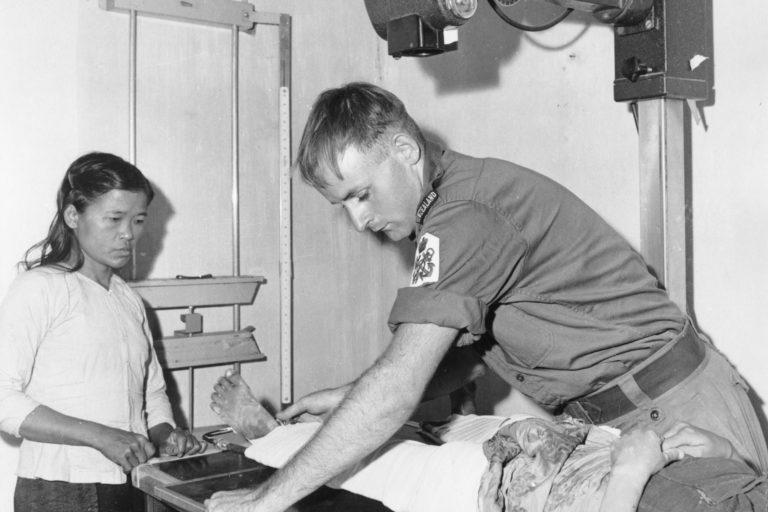
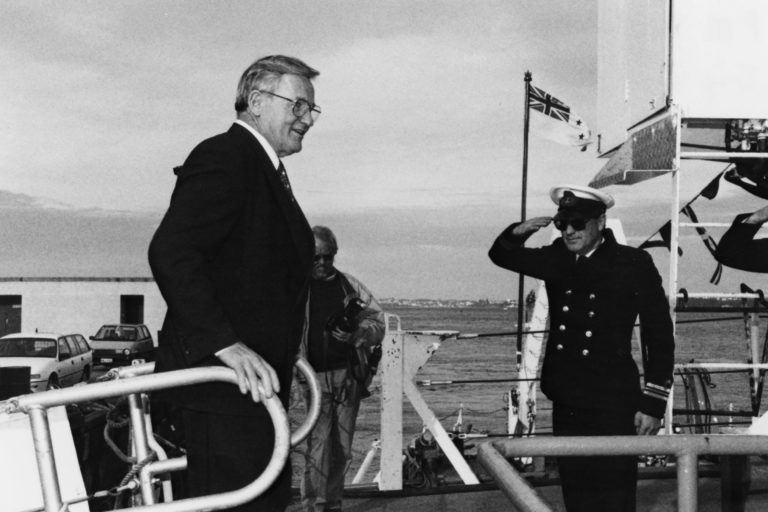

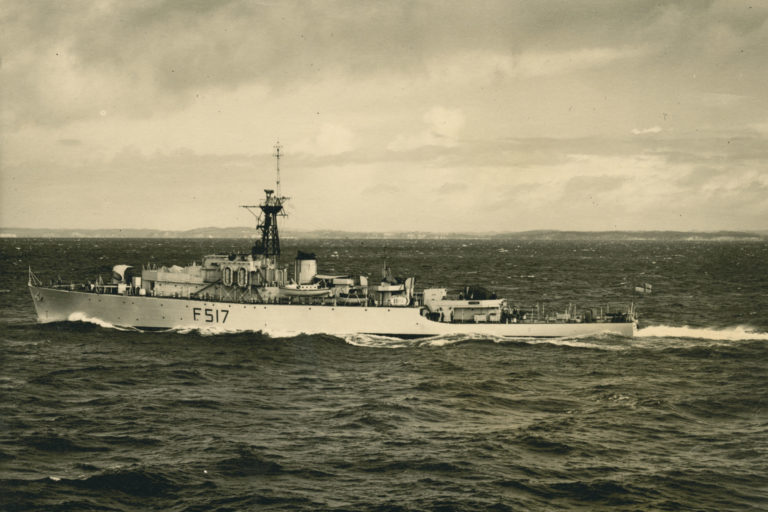
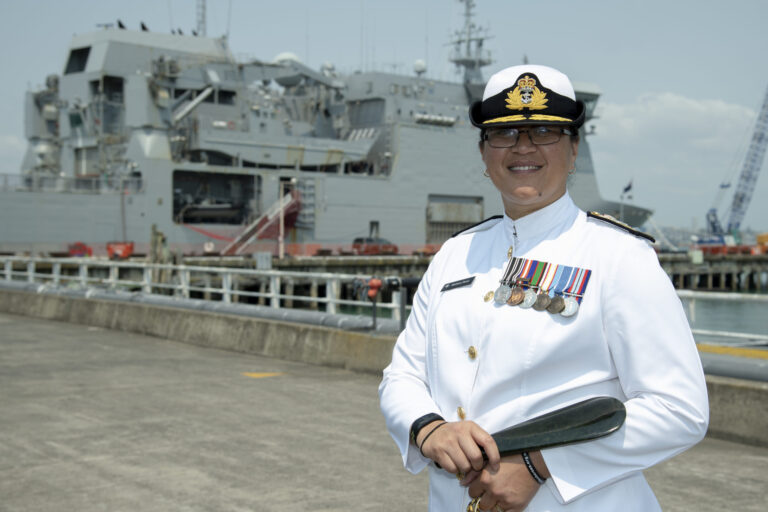
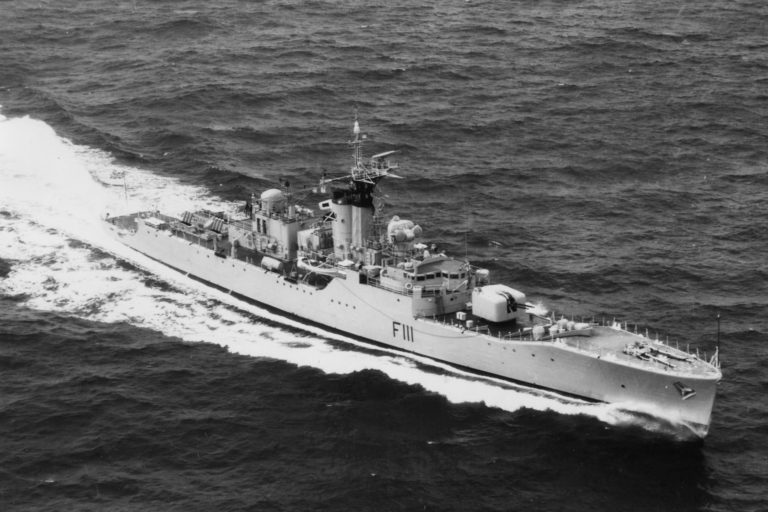


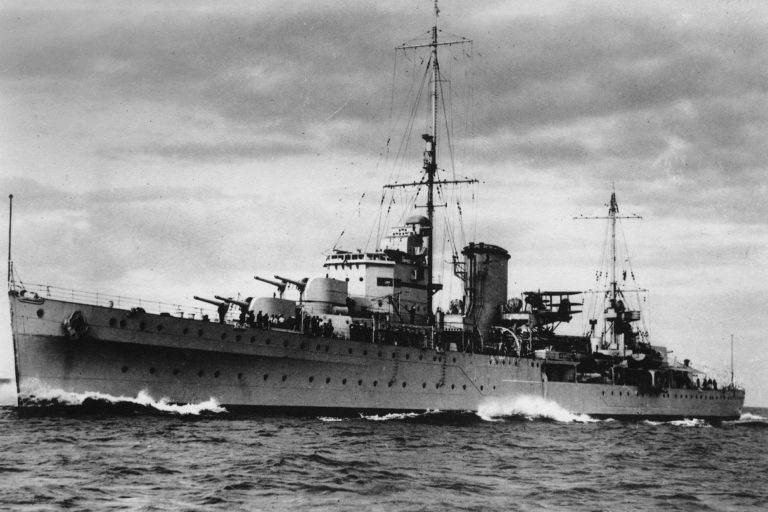
![Amokura Training Ship Amokura [formerly HMS Sparrow]](https://navymuseum.co.nz/wp-content/uploads/amokura.jpg)
